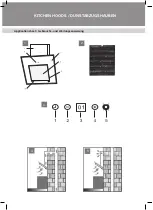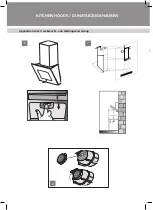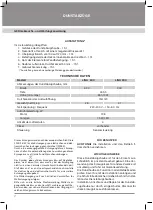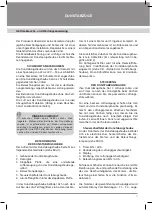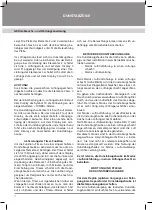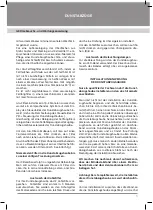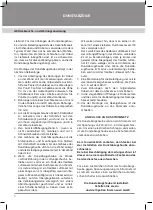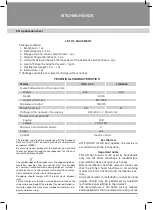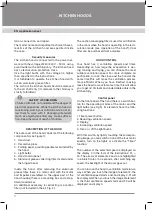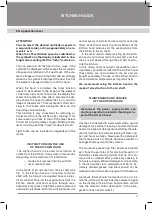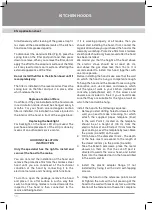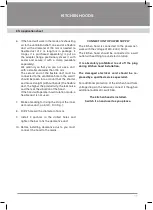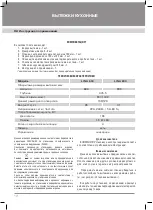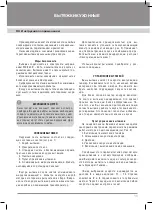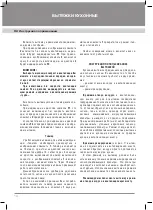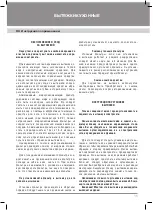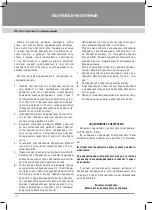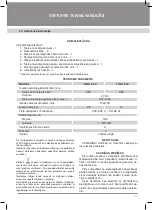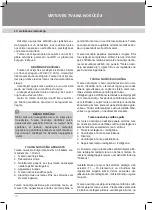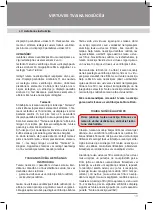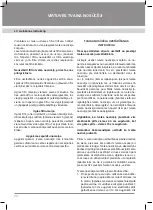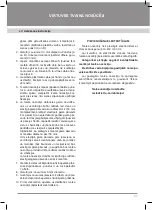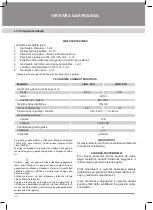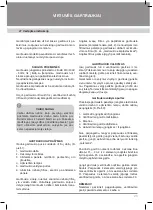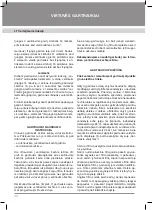
9
EN Application sheet
EN Application sheet
KITCHEN HOODS
ATTENTION!
You can select the desired ventilation speeds in
a sequential order, acting appropriately on ele-
ments 2 or 4.
When the 4th ventilation speed is switched on,
the symbol F4 on the display is indicated in flas-
hing mode, recalling that the "turbo" mode is on.
You can also turn off the hood in two ways. If the
symbol F1 is displayed, which means the 1st ventila-
tion speed is switched on, the next touch of the ele-
ment 2 image will turn off the hood and accordingly
when the F4 symbol is displayed, the next touch of
the element 4 image will also turn off the hood.
When the hood is activated, the timer function
needs to be touched to the image of the element
1. The timer turns on for 15 minutes, the display first
shows the number 15, then after 3 seconds, the dis-
play shows the speed number that is on, and the
image of the element 1 "timer activation" starts blin-
king. In 15 minutes after turning the timer on, the
hood stops automatically.
This function is very convenient for removing re-
sidual smell from the kitchen after cooking. If for
some reason you have to turn off the timer before
the set time, touch element 1 again, blinking of ele-
ment 1 will stop and the "timer" mode will turn off.
Light bulbs can be switched on regardless of the
motor.
INSTRUCTIONS ON THE USE
OF THE KITCHEN HOOD
The kitchen hood is to be used for extraction of
smells from the kitchen. It may work in two modes
depending on the method of its installation:
— mode of air removal into the air shaft;
— recirculation mode.
In the mode of air removal into the air shaft (see
Fig. 7), the kitchen hood is connected to the air
shaft with the help of a corrugated hose or a plas-
tic air conduit. Thus, all the evaporations from the
kitchen, smells, char and soot pas through reus-
able aluminum grease trap filters and are removed
outside the premises. With this working mode, it is
not necessary to install charcoal acrylic scent-trap
filters. Extraction mode is the most efficient as the
kitchen hood removes all the evaporations from
the kitchen to the air shaft.
In the recirculation mode (see Fig. 8), the kitch-
en hood is not connected to the air shaft, and thus
the air is just passed through the kitchen hood in-
side the kitchen.
In this mode, charcoal acrylic disposable scent-
trap filters should be installed on the kitchen hood.
These filters are not included in the set and are
bought separately. The use of the kitchen hood in
the recirculation mode reduces its productivity.
We recommend using the kitchen hood in the
mode of air extraction to the air shaft.
MAINTENANCE AND SERVICE
OF THE KITCHEN HOOD
Disconnect the power supply before you
start any operation related to cleaning or re-
pair of the kitchen hood.
Use the cloth damped in warm water with a neutral
detergent for external cleaning of painted kitchen
hoods. Use special detergents and follow the rele-
vant instructions for external cleaning of steel, cop-
per and brass surfaces. Never use the detergents
that contain acids or chloride, abrasive products or
sponges that may scratch the surface.
The aluminum grease trap filter becomes polluted
as it traps the particles of fat coming through it. It
should be cleaned with products that do not con-
tain acids or washed after preliminary soaking in
hot water using an efficient detergent or, if possible,
in the dish-washer (at a temperature of 65°C). Ex-
tremely polluted grease trap filters should not be
washed in the dish-washer along with kitchenware.
Aluminum filters should be cleaned once in 1.5-2
months, which will be reminded by a relevant signal
on the display of the kitchen hood remote control
(see the remote control description in the para-
graph “Kitchen hood control”).


